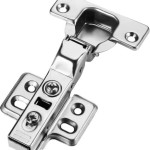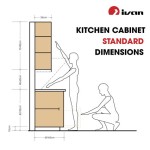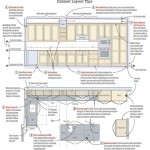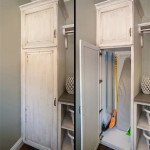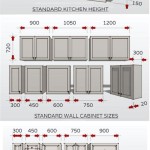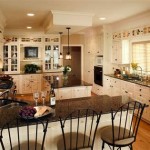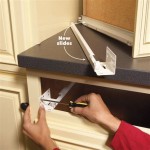Design of Kitchen Hanging Cabinets: Essential Aspects for a Functional and Stylish Space
Kitchen hanging cabinets play a crucial role in maximizing storage and creating a functional and visually appealing kitchen. Their design can significantly impact the overall aesthetic and efficiency of the space. Here are some essential aspects to consider when designing kitchen hanging cabinets:
1. Storage Capacity and Accessibility
Determine the storage requirements and accessibility needs. Consider the types of items you plan to store, including cookware, dishes, appliances, and pantry items. Design cabinets with adjustable shelves or pull-out drawers to accommodate various item sizes and optimize accessibility.
2. Height and Depth
The height of the cabinets should allow for easy access to the contents while providing ample headroom. The depth should accommodate the items you plan to store. Standard cabinet depths range from 12 to 18 inches, but custom depths may be necessary for specialized storage.
3. Door Style and Hardware
The door style of hanging cabinets can greatly impact the aesthetic of the kitchen. From classic shaker doors to modern frameless designs, choose a door style that complements the overall kitchen design. Consider the hardware, such as handles and knobs, to enhance functionality and style.
4. Lighting
Adequate lighting is essential for illuminating the contents of hanging cabinets. Install under-cabinet lighting or task lighting to provide visibility and create a well-lit work area. Consider using glass or clear acrylic doors to allow natural light to penetrate.
5. Ventilation
Ventilation is important to prevent moisture buildup and odors in cabinets that store dishes or cookware. Install vents or grilles in cabinets to allow for proper airflow and prevent the development of mold or mildew.
6. Safety Features
Consider safety features such as soft-close hinges or drawer slides to prevent slamming and accidents. If the cabinets are located above cooktops or ovens, ensure they are made of heat-resistant materials and have adequate clearance for heat dissipation.
7. Materials and Finishes
Choose durable materials such as wood, laminate, or metal for hanging cabinets to ensure longevity. The finish should be resistant to moisture and heat. Consider the overall kitchen design when selecting cabinet finishes, and experiment with colors, textures, and patterns to create a cohesive space.
8. Customization
Custom hanging cabinets allow for tailored solutions to meet specific storage needs and aesthetic preferences. Design cabinets with custom depths, heights, and door styles to maximize space and elevate the overall kitchen design.
By carefully considering these essential aspects, you can create kitchen hanging cabinets that not only meet your functional requirements but also enhance the aesthetics and functionality of the space. A well-designed kitchen hanging cabinet system will provide ample storage, improve accessibility, and contribute to a stylish and efficient kitchen.

Hanging Cabinets Kitchen Design Ideas Pictures Remodel And Decor Upper Furniture

Hanging Cabinets New Design Kitchen Cabinet Modern Furniture China Made In Com

Stock Kitchen Hanging Cabinet Wall Bedroom Mounted Storage Lazada Ph

Display Cabinets Above Breakfast Bar Not The Right Colors But Similar Idea Do It Yourself Home

Pvc Kitchen Cabinets Units Designs Hanging Cabinet Design

Image Result For Small Kitchen Upper Cabinet Storage Ideas Design Simple Cabinets

Kitchen Cabinets Es Easywood S
Wall Cabinet Kitchen Hanging Balcony Locker Bathroom Ee Es

10 Voucher Hanging Cabinet Kitchen Wooden Wall Balcony Storage For Lazada Ph

Kitchen Wall Hanging Cabinet Design For Dining Room China Furniture Made In Com
Related Posts

